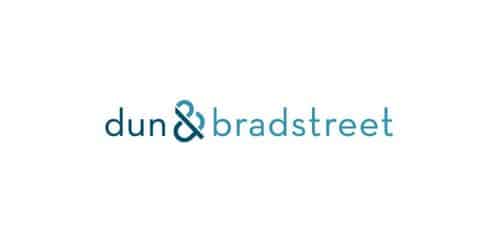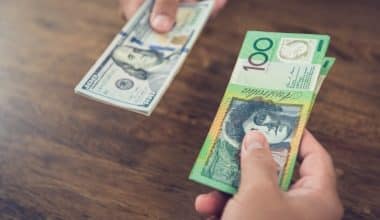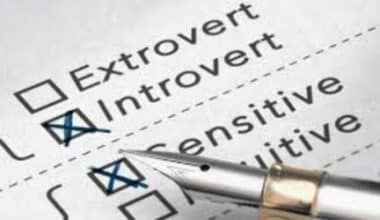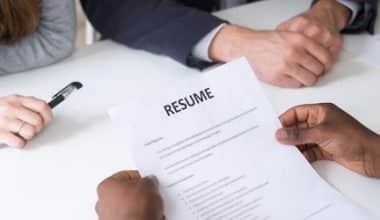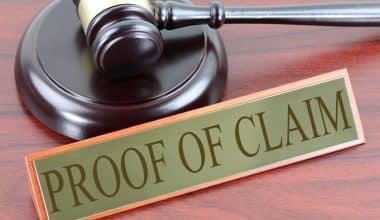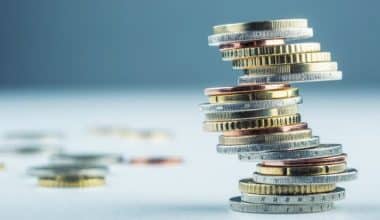Dun & Bradstreet (DNB) is a 180-year-old firm that assists businesses with sales, finance, compliance, procurement, and marketing. Here, we’ll explain how Dun & Bradstreet works in detail, as well as the importance of getting a DUNS number for your business.
What Is Dun & Bradstreet?
Dun & Bradstreet is a global company that supplies clients with business intelligence products via its database and analytics software. The goods are used to boost business revenues, as well as for marketing and risk management.
DUNSRight® Quality Process is a proprietary analytics tool used by Dun & Bradstreet to support its corporate software. The company’s proprietary data universal numbering system (DUNS numbers) distributes a DUN number to each client, allowing for better data management across its global client base.
Dun & Bradstreet was founded in the 1930s as a result of a combination between R.G. Dun & Co. and Bradstreet Co. The company has raised $375 million in two rounds of fundraising and has completed multiple acquisitions and divestitures. Its two primary business categories are information services and internet software and services.
Dun & Bradstreet’s History
Dun & Bradstreet dates back to 1841, when Lewis Tappan started the Mercantile Agency in New York City. In the later part of the decade, Tappan handed over the reins of the corporation to Benjamin Douglass. When Robert Graham Dun purchased the company in 1859, it was reincorporated as R.G. Dun & Co. In 1931, the corporation bought the National Credit Office and reformed it as R.G. Dun & Corp.
In 1849, John Bradstreet created and formed Bradstreet Co. in Cincinnati. In 1851, the business released the first book of commercial ratings, popularizing the use of credit ratings. Bradstreet relocated his company to New York in 1855.
Negotiations between the two corporations over a merger began in 1933. The merger took place after one month of negotiations. The Wall Street Journal announced the merger and stated that the newly created business would be known as R.G. Dun-Bradstreet, later altered to Dun & Bradstreet Inc. in 1939. In 2001, the company formally changed its name to D&B as part of a rebranding campaign.
The corporation has a long history of mergers, acquisitions, and divestitures, culminating in its most recent acquisition in January 2021 of Bisnode, a European data and analytics firm. The transaction included both cash and a private placement of newly issued DNB common shares. The company announced plans to purchase Eyeota and NetWise, two companies that provide analytics and audience solutions for digital marketing, in November 2021.
Following a share repurchase program in 2019, D&B announced an initial public offering (IPO) on June 24, 2020, relisting on the New York Stock Exchange (NYSE) under the ticker DNB. Its revenue for 2020 was $1.7 billion. Across 243 countries and territories, the corporation services about 420 million enterprises.
What Is the Dun & Bradstreet Report and How Does It Work?
The Dun & Bradstreet (D&B) company credit report is a common tool for lenders and businesses. The report displays a wide range of corporate information, such as operational statistics and public filings such as liens and bankruptcies. D&B also provides PAYDEX® business credit scores ranging from 1 to 100, based on data from public records and information submitted directly from vendors and collection agencies. D&B reports, which reveal a company’s overall health and status, can be generated by the company itself or by a third party.
Here’s a common instance if you’re wondering how Dun and Bradstreet works. Creditors evaluate your creditworthiness based on the information on your credit report. Business owners seeking loan approval will very certainly have their D&B credit records examined. Business owners can obtain credit reports by searching the D&B website with their DUNS Number or firm name. Your D&B report, like your personal credit, improves with a good payment history, well-managed credit balances, and accurate business information.
Features of the Dun & Bradstreet Report
The D&B report contains a wide range of business data, such as a late payment indicator, complete company profile view, and delinquency risk score. Business owners can also check the number of lawsuits filed against the company based on the sort of services acquired. D&B generates credit profiles using information from over 30,000 private and public sources.
#1. Corporate Profile
The D&B corporate profile section provides contact information, industry classification, and the overall business history of the company. As a summary, you’ll also discover a delinquency score rating and a failure score rating here. Businesses wishing to confirm the information on a company can view its employee count as well as the state in which it was registered.
The D&B report also includes information about the company’s size and the number of years it has been in business. Lenders and vendors use this information to determine whether a company is a credible credit option. Business owners can validate their own data and highlight problems that need to be addressed. Owners can also see their own failure score to learn how creditors and lenders perceive the potential danger of their business.
Business Activities
This area of the company profile contains information on the company’s type of business, number of workers, facilities, and location. D&B also categorizes the company’s financial standing as strong, good, fair, or unbalanced. This ratio compares the company under consideration to other companies in the same industry.
D&B also categorizes the company’s financing position as secured or unsecured, indicating whether or not the corporation has collateral associated with the business. This section’s data is not self-reported. If there is a disparity, owners must contact D&B to commence an investigation for correction.
#2. Risk Assessment
The D&B credit report’s risk assessment dashboard is the most detailed element. The data shown here illustrates Dun & Bradstreet’s rating systems. These ratings provide information about the company’s most relevant risk indicators as well as its overall health. Owners can see the recommended maximum amount of credit for the company indicated here.
#3. Dun & Bradstreet Report Scores
D&B rates businesses in five ways:
PAYDEX® Score: This rating is based on the capacity to pay debts over the last two years. It is most commonly used to determine credit worthiness, much like a personal FICO® score. Scores range from 1 to 100, with 100 being the highest possible.
D&B Rating: Based on balance sheets, company size, and business age, this rating averages a company’s financial strength. The rating consists of two scores: financial strength, which is coded with letters and numbers based on firm size, and risk indication score, which ranges from 1 to 4. (with 1 being the lowest risk).
Delinquency Predictor Score: This predicts whether a company will become delinquent or cease operations during the following 12 months. This score is divided into three categories: percentile (1 to 100, with 100 being the lowest risk), class (1 to 5, with 1 being the lowest risk), and raw score (101 to 670, with 670 being the lowest risk).
Failure score: This score reflects the likelihood that a company may suffer financial difficulties in the coming year. Scores are presented in three formats: a percentile (1 to 100, with 1 representing the highest risk), a class (1 to 5, with 1 representing the lowest risk), and a raw score (1,001 to 1,875, with the lowest number indicating highest risk).
The likelihood of a corporation going out of business or being insolvent is rated using the viability rating. Scores are calculated using four indicators: viability score (1–9, with 1 indicating the lowest risk), portfolio comparison (1–9, with 1 being the best), data depth code (A–M), and corporate profile code (A through Z).
#4. Trade Payments
Business owners looking for vendor and trade partnerships will find it under the trade payment area. The Dun & Bradstreet credit report details the several types of trade accounts that each company has, as well as the overall value of each tradeline. Viewers can see past due amounts as well as the number of days the vendor listed the account as late in a single glance.
This section displays the most recently associated tradelines with the company. It also shows the greatest tradeline amount and the amount left outstanding for each tradeline. Businesses can also view the overall credit amount, tradeline terms, and the proportion of payments that were late. Because trade payments represent corporate scale, higher trade payments will be weighed more highly in evaluations.
#5. Legal Events
Under the legal events area, businesses can view legal records such as liens, bankruptcies, the number of Uniform Commercial Code (UCC) filings, lawsuits, and judgments the company has. It also covers any declarations made under the Personal Privacy Security Act (PPSA). Creditors may perceive a company with multiple liens, judgments, and lawsuits as riskier.
#6. The Family Tree
The credit report from Dun & Bradstreet includes the company’s ownership in relation to other firms. The family tree section examines the majority-owned subsidiaries globally and how they are related to other firms that have the same majority-owned subsidiary. This application allows business owners to see their company’s size and locations, as well as verify their business details. This can also show shady business relationships.
Where Can I Get a D&B Report?
Obtaining a Dun & Bradstreet credit report consists of three steps.
#1. Navigate to the D&B Report website.
On the D&B website, you can obtain your own Dun & Bradstreet report. Once you’re on the first page, select “DUNS Number Lookup” from the “DUNS Number” dropdown menu. If you don’t have your DUNS Number, you can look up your business by name and state. Click on “Search Companies, Content, Industries” at the top of the page to search by your business name.
#2. Search for Your Company
To use the name search, enter your firm name in the search area. You’ll then see a screen with your company’s name, street address, city, and state listed. Select the field that has the correct information about your organization. By clicking “claim this firm,” you will be transported to the company’s D&B profile page, where you may claim your business listing. Then, if you don’t already have an account with D&B, you’ll create one or log in.
#3. Make a purchase
You’ll then be taken to a purchase page where you can select the services you want and add them to your basket. Descriptions and monthly expenses are provided for each bundle. You can also pay in annual installments if you prefer. After you’ve chosen your purchase, click the “Continue to Checkout” option on the popup screen. You will be able to choose your payment method, complete the transaction, and examine your credit profile online.
DUNS Number For Small Businesses
Small business owners have almost certainly heard of a Data Universal Numbering System (DUNS) number, but may not have one or feel the need to obtain one. When determining if a company requires a DUNS Number, it is critical to understand what it is used for and how it might be advantageous.
What is a DUNS Number?
It’s a nine-digit identification system for enterprises. Lenders and potential business partners use DUNS numbers to assist establish a company’s dependability and financial stability. It functions similarly to a social security number but must be obtained directly from Dun & Bradstreet.
It should be noted that a DUNS number might be assigned to a company without its knowledge or approval if a third-party supplier or financial institution seeks information about the company. Checking to see if your company already has a DUNS number is a good place to start. You may check if you have a DUNS number and double-check your details here.
Is a DUNS number required for a small business?
A DUNS number is essential for any company that does business with the government. A DUNS number is also useful for firms who want to seek financing or expand to make it easier for lenders to analyze a company’s credit history.
One thing to keep in mind after obtaining a DUNS number is that public findings, judgments, and bankruptcies will be automatically added to the business’ credit history. A company that operates on credit terms with its vendors or suppliers will almost certainly need to report those transactions on its own in order for its credit history to reflect them, for which Dun & Bradstreet may charge a fee.
There are no negative consequences to obtaining a DUNS number and keeping a basic credit profile. Suppliers and financial institutions want as much information as possible, even if your credit history reveals bad information.
How Much Does A DUNS Number Cost?
For all entities doing business with the federal government, obtaining a DUNS number is completely free. Grant and cooperative agreement applicants/prospective applicants, as well as Federal contractors, are included.
How to Acquire a DUNS Number
It is entirely free to register for a DUNS number and begin building a credit report for your company with D&B online. A DUNS number is available to any legal company, including LLCs, C-corps, and S-corps. Consider the following methods to obtain your DUNS number:
#1. Determine whether you already have one.
Anyone, including business owners, vendors, financial institutions, and government agencies, can seek a DUNS record for their company. You may already have a DUNS number if a third party has requested your company’s credit information. To see if you already have a DUNS number, go to the D&B website and enter your company’s name, phone number, and address. If your company already has a DUNS number, you can use it to verify your identity and receive access to your credit report and financial data.
#2. Gather all of your information
If you do not already have a DUNS number, you can obtain one by completing a simple online application or phoning their toll-free number at 1-(866) 705-5711. To apply, you must understand:
- Your company’s legal standing (partnership, LLC, corporation, proprietorship)
- Your company’s legal name
- The year of incorporation
- Phone number Address
- Primary goods and services
- Employees’ number
To complete your registration, enter the information into the blanks online or over the phone. The entire procedure usually just takes a few minutes.
#3. Document transactions
Your business credit report will automatically gather public information such as legal judgments and bankruptcies once you have an established DUNS number. Because most suppliers and vendors do not report directly to D&B, you will likely need to submit them yourself for a charge if you want your score to reflect past business transactions.
Do You Need A Business Website To Get A DUNS Number?
No, but Dun & Bradstreet does require that you register your company on their site before they will hand out a DUNS number
In Conclusion
Dun & Bradstreet is a global company that supplies clients with business intelligence products via its database and analytics software. The Dun & Bradstreet report compiles business data from over 30,000 sources to produce a complete corporate credit report. This data comprises both publicly and privately gathered data, as well as five scores that assess a company’s credit and risk. The D&B report will most likely help business owners establish business credit, secure a small business loan, or check other businesses.
Related Articles
- PAYDEX Score: Best Easy Guide & What You Should Know
- BUSINESS CREDIT SCORE: How to Check Your Business Credit Score
- HOW TO BUILD BUSINESS CREDIT Stress-free, Explained!!!
- BUSINESS CREDIT REPORTING AGENCIES: Top Picks In 2023
